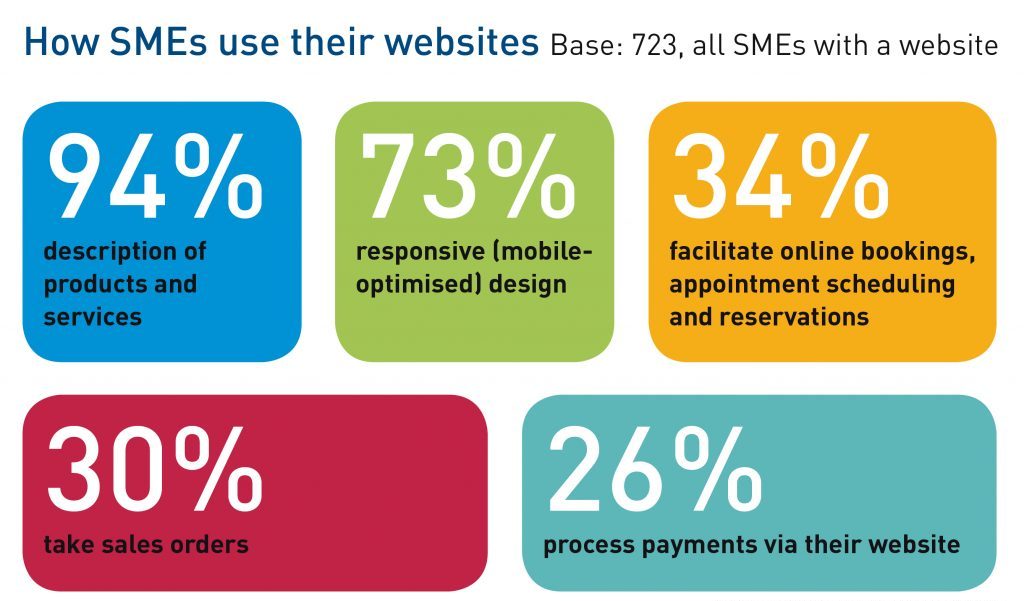6 in 10 people have used an emerging digital technology – Internet Day survey
Online dating, Bitcoin and diet tracking—Ireland’s digital habits revealed in our new Digital trends in Ireland 2018 Internet Day survey conducted among 1,000 people.
The survey, conducted by Core Research among 1,000 people, was published today to mark Internet Day, a celebration of the internet and its contribution to society and the economy, hosted annually by us.
The research reveals Ireland’s attitudes to and use of internet technology, our online shopping habits, and the digital behavioural divides between Dublin and Ireland’s regional towns.
Key findings
– There are 4 internet-enabled devices in every Irish household.
– 6 in 10 people have used an emerging digital technology, like mobile payments, augmented reality, a digital assistant, a smart appliance, or a virtual address service (like Parcel Motel).
– 20% spend more than 5 hours a day on the internet.
– Almost two-thirds (63%) buy consumer items (like clothes and electronics) online at least monthly. Almost half (49%) order food online at least monthly.
– 1 in 10 have purchased cryptocurrency, like Bitcoin, at least once.
– Despite the prevalence of Tinder and Bumble, 83% say they have never engaged in online dating.
– 46% of Dubliners track their health data, like diet, sleep and steps, online, compared to 33% of people outside the capital.
– 35% said the internet has connected them with new friends, 12% said it has helped them become less introverted, and 9% said that the internet has helped them find love.
– Almost 2 in 10 people work remotely from home at least once per month and over 4 in 10 say that they can’t, because their presence is required in the office.

Ireland’s internet economy
Irish citizens use the internet to stay connected with friends, family and the world—and also to buy goods and services. However, our Digital trends in Ireland 2018 Internet Day survey shows that most Irish businesses are not keeping up, particularly those in regional towns.
The vast majority (68%) of Irish consumers believe that their local main street is not equipped for the digital age. When asked why, 40% said that their local shops are not online. 22% said that booking appointments or reservations online is not a priority for their local community. In areas outside of Dublin, 19% said their local town’s internet quality was too poor to facilitate e-commerce.

65% said they would buy more from their local shops if those shops had some form of click-and-collect service which allowed them to order a product online and pick it up in store.
In total, 46% of people can’t book appointments online for services in their local town. This figure drops to just a third (33%) in Dublin, but rises to more than half (51%) in areas outside the capital.
Hairdressers are the most likely to offer online booking (29% in total) while handymen and mechanics are the least likely (both 12%).
Celebrating the internet and inspiring change
Ireland’s Internet Day will be officially celebrated in Gorey, Co Wexford today. Gorey was chosen as Ireland’s first ‘Digital Town’ in our new initiative aimed at promoting digital skills and knowledge in regional areas.
Over the last four weeks, we have worked with community organisations and businesses in Gorey to develop their digital skills and online presence, and showcase the digital achievements of Gorey. Visit our Internet Day page for videos of all of our digital engagements.
Commenting today, our CEO David Curtin said:
“Ireland is digital. We use multiple devices to access the internet, we are quick to try or adopt new technologies, and we use the internet in diverse ways, whether to purchase goods and services, learn about the world, connect with friends, share our creative pursuits, or find love.
“E-commerce is worth €12.3 billion to the Irish economy[1], but our SME Digital Health Index research shows that just 3 in 10 Irish SMEs can take sales orders online. This is despite the fact that Irish consumers are patriotic and want to support their local business more: two in three consumers would happily buy from their local shops if they had some kind of e-commerce service, like click-and-collect. Until that service is offered, however, consumers will simply continue to spend money with more convenient, user-friendly international retailers.
“Both industry and Government must recognise Irish SMEs’ ongoing lack of e-commerce ability. To that end, in our most recent SME Digital Health Index, we have recommended the rollout of a national ‘Digital Activation Campaign’ designed specifically to provide leadership and direction. The campaign would entail the creation of a new online resource for SMEs, with simple, step-by-step guides to website and e-commerce development, as well as a nationwide interactive workshop programme to help SMEs bring their digital plans to life.

“For regional Ireland in particular, the National Broadband Plan must be redeveloped and reprioritised in favour of SMEs. Despite the near collapse of the current project, the Government must not lose sight of the fact that SME e-commerce is essential to not only balanced economic development across Ireland, but key to the future success of Ireland Inc in an increasingly competitive, globalised world. A short-term measure would be to fast-track the development of more regional ‘digital hubs’, like Gorey and Skibbereen, which act as magnets for local investment.
Naomi Temple is our Marketing Specialist working within our corporate communications team.
